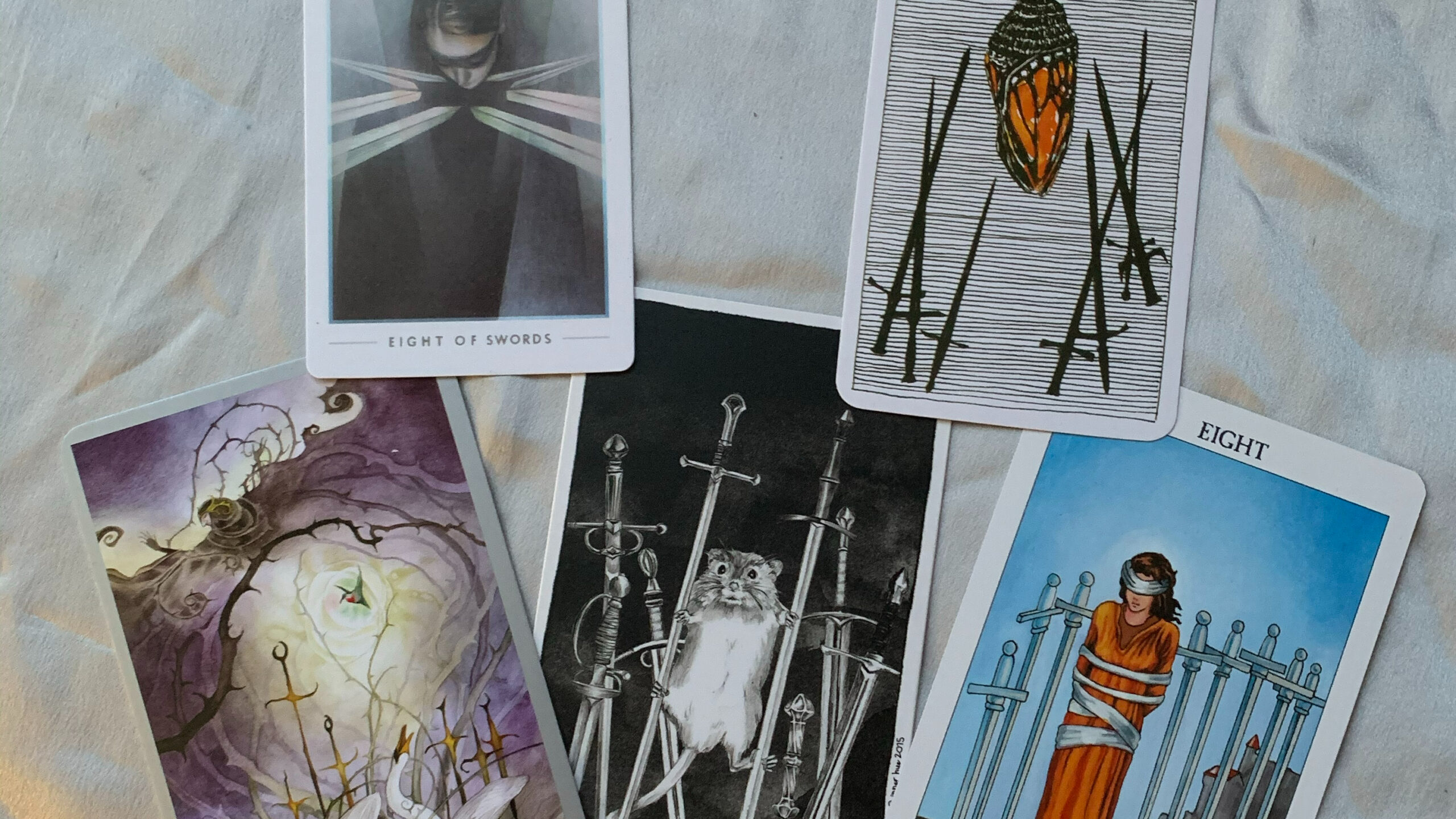For most of the years I’ve read tarot, I’ve read from decks based on the Thoth tarot deck. My first deck was the Haindl tarot (shown in the image below: bottom left), which was a gift from a dear friend on my 22nd birthday. I’d been mulling over decks for ages, trying to find a deck that spoke to me and initially the Rider Waite deck just didn’t do it for me. It felt too cartoonish and monocultural. I didn’t enjoy the Christian undertones in the imagery and just generally didn’t dig it. So when I found the Haindl deck, I was excited because it picked up on themes from around the world. It wasn’t just a bunch of white folks and Christian iconography. Even back then these things were really important to me and honestly, not something that you found in a lot of decks in the 90s. At least not the ones I had access to.

top left Thoth, top right Tarot de Marseilles, bottom left Haindl, bottom right Mary-El
I used this deck for years. From deciding to move across country to pursuing a master’s degree and everything in between, this deck was my go to. And as my relationship to it evolved, so too did the cards I tended to get. When I first started reading from this deck, it was all about the Tower, the Fool, the Hanged Man and Son of Cups: all of which were so key to who I was trying to become at that time in my life.
In time, different cards came through: the Emperor, the High Priestess, the Magician. Then so many swords. For a long time, so many swords. There is a lesson in that that I’m still trying to willfully ignore or think my way out of 🙂 Yes, that was a tarot joke.
Ironically, around this time I lost a card and for years I couldn’t find it. I looked everywhere. (I wish I could remember which it was but for the life of me I can’t). I counted the cards. I checked every book in my bookshelf and every possible nook and cranny I could imagine.
And then I joined a coven and we were encouraged to build our skills by working with either the Thoth or Rider Waite (RW). The timing was good as I needed a new deck. I opted for the Thoth as it was more aligned with the deck I already knew. (Seen in image above, top left). And still the RW didn’t do it for me.
I used the Thoth deck for years (the majority of my relationship with tarot has been with either Haindl or Thoth decks). I actually only started exploring other decks when I took Susannah Conway’s very excellent tarot course, 78 Mirrors. In that course, I discovered the vast modern world of indie tarot cards (a financial rabbit hole I really didn’t need to venture down). I was feeling tired of the Thoth deck I had – it’s readings felt too intense or harsh. The worldview of the deck felt brutal and without forgiveness. I needed, as a new mom, something kinder in my life. So I purchased the Mary-El deck. Again, it’s a deck that features more diversity and sexual fluidity. Things I wanted to see more of in my decks because they pushed boundaries of gender/sex identity.
Interestingly enough, as I was using this deck, comparing cards, my missing Haindl deck card reappeared. I kid you not. After being missing for a good 6 years or so (and I checked every so often in those years), the card resurfaced. I suppose that it was the deck’s way to say I was ready to work with it again. Or that perhaps I needed the severity of the Thoth deck at that time. Who knows. But the Mary-El was a lovely transition deck with complex meanings and imagery that appeals to my literary soul. This lit geek loves her some symbolism.

Top left Fountain, top right Wild Unknown , bottom left Shadowscapes, bottom middle Lumina, bottom right Radiant Rider Waite
But then something happened and I just wasn’t feeling it any longer so I started exploring other decks. Eventually I found my way to the Radiant RW deck. And suddenly, after 21 years of reading tarot, I find myself working with the RW and finally appreciating the imagery, simplicity, and clarity of the message/symbolism of the deck. I don’t feel like the readings are like brutal harsh messages but rather, friendly, softer messages.
And the other day, when I pulled the 8 of swords and decided to compare the decks I have, I was able to see why. Thoth based decks focus on an idea of interference without showcasing the vulnerability and naivety depicted in the RW based versions. There is an idea of gridlock and crossed swords in the top image whereas the bottom images focuses on a sense of being vulnerable and potentially unable to see or defend oneself.
It’s a subtle distinction but can have a huge impact in how we read the cards. When I look at the more classic RW cards, I don’t see interference or read the cards intuitively with that in mind, which leads me to thinking about how this distinction plays out in all the decks?


2 thoughts on “8 of Swords: Comparing Thoth & Rider Waite Tarot Systems”